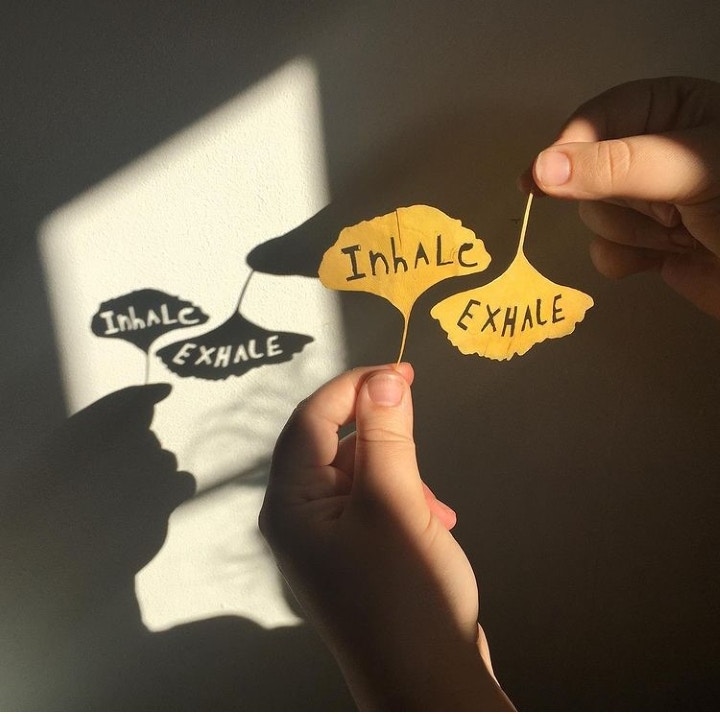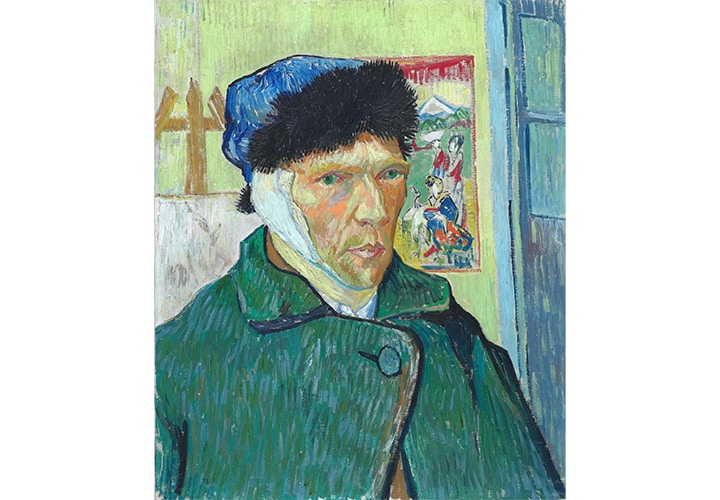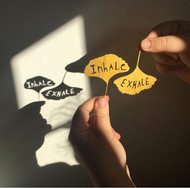The Intersections of Art and Mental Health Wellbeing
Posted by Cass Art on 10th May 2022

Inhale, Exhale by Megan Fatharly
Creativity is commonly thought of as a positive advance for society that transcends the status quo knowledge but the connection between creativity and mental health has been a source of interest for researchers for years. Throughout art history the industry has seen mental illness not as alien but part of the human condition that can affect any one of us. Some examples of as follows:
Renaissance artist Albrecht Durer's piece Melancholia I, has been said to be a representation of what was conceptualised as mental illness at the time: an imbalance of the humours but, also, a part of the human condition, and one in which the struggle to create and reach full potential is under threat.

Albrecht Durer - Melancholia I, Franscisco Goya’-The sleep of reason produces monsters 1799
The Romantic age romanticised extreme states of mind and crippling inner-suffering. In Franscisco Goya’s work The sleep of reason produces monsters 1799, he puts himself in the painting sleeping alone, head buried in a book, surrounded by a series of animals. In this painting the the owls represent reason and wisdom whilst the bats symbolise his crippling doubts. Goya himself openly spoke about his suffering with ill-health and psychological disorders such as depression and then undiagnosed hypochondria. At the bottom of the work there is an inscription of artistic intent:
‘The author dreaming. His one intention is to banish harmful beliefs commonly held, and with this work of caprichos to perpetuate the solid testimony of truth.’This piece can be regarded as a portrait of his own mental health as at this point Goya was deaf which further deteriorated his own mental health. The above inscription can be seen as his way of attempting to communicate and erase stigma around his own anxiety and melancholy.

Moving on a good few years one of the most famous depictions of the intersections and portrayal of art and mental health is of course Vincent Van Gogh who famously cut off his own ear and depicted it in his masterpiece ‘Self-Portrait with a bandanged Ear. This very open portrayal of his struggles cemented his now legendary incident as a prime example of mental instability intertwined with creative genius. One of the most notable things about this work is although a visceral subject matter, the actual manner in which its painted and how Vincent has depicted himself in what feels like an aura of calmness.
 Edvard Munch - Anxiety Tracey Emin - Untitled
Edvard Munch - Anxiety Tracey Emin - Untitled
Alongside Van Gogh many people familiar with Edvard Munch who depicts mental suffering and loneliness. People will think to the Scream when they’re reminded of Munch - one of the most famous paintings of all time which portrays a lonesome figure screaming in turmoil. But one of his lesser known works simply entitled Anxiety which consists of a crowd of dark-costumed people with vacant stares and tense facial expressions walking by a Fjord under an apocalyptic red skyline. Munch’s work has a real raw emotional edge to it and has honest and haunting portray of work has been an inspiration to many contemporary artists and non more so than Tracey Emin who back in 2020 had a show in the Royal Academy ‘Tracey Emin/Edvard Munch: Loneliness of the Soul’. This exhibition featured more than 25 of Tracey Emin’s works which explore the loneliness of the soul and mental instability, and sat alongside a carefully considered selection of 18 oils and watercolours drawn from Edvard Munch’s archives in Oslo, Norway.
The above mentioned are just a snippet of the strong relationship between mental health and art. We’re all aware of the stereotype of the “tortured/troubled artist,” where the best artists create their masterpieces in times of suffering—and mental illness—only further solidifies stigma in the community. People may be less inclined to try creative outlets to work through difficult moments and feelings. In turn, people may be afraid to express themselves as an artist out of fear of being judged, misunderstood, or stigmatized. But the methods artists throughout history have always depicted their struggles so openly and honestly and continue to do so today on a massive scale is so evident.

Artist Adelaide Damoah in action
Over the years studies have shown that making art stimulates the release of the chemical dopamine which is released whenever we do something that is pleasurable. Increased levels of this feel-good neurotransmitter can be very helpful if you are battling anxiety or depression.
Mental health professionals and experts agree that quite simply doing art in whatever form that may take has many benefits, from providing mindfulness, boosting your self-esteem, and providing you a safe outlet to relieve your emotions, to giving you a sense of control over your life and helping you to get to know and understand yourself better. During the process of art creation, you will be taking yourself on a journey of self-discovery that will help you eliminate emotional roadblocks and learn how to communicate with yourself and others. Creative activity undertaken frequently is linked to positive psychological functioning, while increased engagement with art exhibitions/workshops is associated with improved overall life satisfaction. And sometimes it’s a simple as using a mediative form of escapism to a degree, to completely focus your mind on something such as making something!

Masterpeace London- a workshop space based all around art and wellbeing
Picasso said every child is an artist and he is of course right! For when you’re a child there are no barriers between learning and creating, between information and imagination. Its all essentially part of the same thing – instinct. When you think about it no one teaches a child to play, its all done naturally as its part of the human condition. Practicing artists who feel their creative drive has been stifled could take a page out of child’s book by observing their creativity. There are no unnatural border between artistic disciplines when you’re a child. Painting is not visual art, sketches are not skits and so on. So they don’t’ see themselves working in one field to another and instinctively adopt whatever feels right in that moment. Whereas sometimes us adults judge someone who maybe a successful musician trying their hand at painting, theatre. We have an undeniable unnecessary judgement about someone who is talented in more than 1 artistic discipline. We shouldn’t be, we’re just channelling our inner child and embracing creativity to the fullest!
So may studies show that art can create conditions for mindfulness by accessing and engaging different parts of the brain through conscious shifting of mental states. For those of us who practise regularly in the arts, we are aware of those states, able to shift in and out and reap the physiological benefits through a neurological system that delights in and rewards cognitive challenges. Research shows that the arts can be used to create a unique cognitive shift into a holistic state of mind called flow, a state of optimal engagement first identified in artists, that is mentally pleasurable and neurochemically rewarding.
There is a wealth of studies on the relationship between the arts, flow and mental health, and flow-like states have been connected to mindfulness, attention, creativity and even improved cognition.



